A Note from Sue & Alex
Hello Ranch Family,
We hope that this finds you and your families happy, healthy and ready for a beautiful Fall season. This year has been a very interesting and challenging one. It has given us an opportunity to look inside ourselves and find our strength and optimism.
The human spirit has always been indomitable; Mother Teresa, Nelson Mandela, Rosa Parks and Stephen Hawking come to mind. One of the best ways we grow on this journey of life is by facing challenges. There is polarity in all things, the yin and the yang. We cannot dictate what comes our way in life, but we can always choose how we react to each situation. It is one of the only things that is in fact in our control.
We have witnessed this beautiful spirit over and over again. People making the best of situations: spending more time with family, learning something new, running, walking, dancing, cooking, playing games and simply just “being.” By rushing less we are living more fully. Even the planet has benefited from humans slowing down.
For us, it’s a time to strengthen our mindfulness practice and focus on the present moment. Rather than feed feelings of anxiety by projecting worries into the future, we trust that in the end we will come out stronger, happier and more appreciative of our blessings.
The Ranch Team is so grateful for all of you and we look forward to seeing you soon!
In Health and Joy
~ Sue & Alex


Thank you for supporting us in Conde Nast Traveler’s Readers’ Choice Awards! It is a huge honor and wonderful way to celebrate our 10-year anniversary.

The Ranch Private offers a unique opportunity to customize your Ranch experience while at a distance from the other guests on property. Limited to just two groups of up to four guests (traveling together), your stay is individually tailored. Whether you have specific concerns or desires to limit participation or you want even more of a challenge you will leave with results!
All aspects of The Ranch Private, including meals, take place in spaces dedicated just for you/your group. Our team can even schedule your day around any work commitments so that you can get away and get healthy but still make any important calls or hold meetings virtually as needed! Learn more at https://theranchmalibu.com/health-fitness-programs/the-ranch-private/.

The delightful combination of rose and marigold is harvested directly from our 2-acre organic garden and the newest scent to join our signature Plant Bar collection!
This hydrating body cleanser offers a refreshing, paraben-free lather that softly cleanses the skin while pumice powder provides gentle exfoliation and hydration. The glycerin-based formula of our Plant Bars acts as a humectant, pulling moisture from the air to hydrate the skin.
In this new scent, delicate marigold petals provide a beautiful touch that both soothe and smooth skin. Egyptian Rose Geranium essential oil helps balance congested and mature skin, has natural antioxidants and strengthens and tones tissues.
Each set comes with three 6.5 oz bars, two of which include the guest-favorite pumice feature, which helps to boost circulation. Learn more at https://theranchmalibu.com/product/rose-marigold-plant-bar/.

We are thrilled to debut our new store at Thrive Market! Now you can easily shop our chef’s must-have ingredients, all in one place through Thrive Market!
This online membership-based market makes healthy living easy and accessible for everyone. Members receive guaranteed savings with exclusive prices on the highest quality, healthy and sustainable products.
Current members can access our store through thrivemarket.com/theranchmalibu. New to Thrive? Join using the link above and receive a complimentary gift from Thrive when you sign up for a yearly membership.

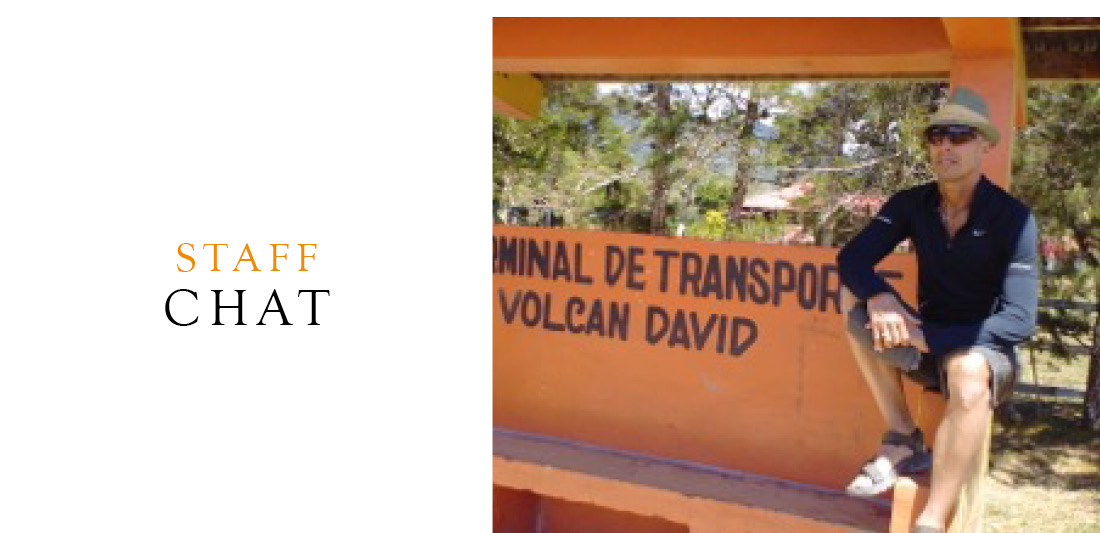
Catching up with Senior Program Guide Michael Becker!
– What are you grateful for?
In no particular order my wife, my dog, family, friends, job, existence and even being born, raised and living in the States most of my life – despite all of the difficulties we’re facing at the moment.
– When did you join The Ranch and what has been your most rewarding moment?
I joined the Ranch in January 2018 with my most rewarding moment being last May when Angela, the Director of 4.0, offered me a full-time position. That means Lisa and Angela, with all of their experience, believe that I have and can be trusted to reliably make decisions that have our guests’ best interests in mind. That’s an honor I feel obligated to live up to and don’t take for granted. I also feel very fortunate to have observed and worked with all of the Ranch staff and to have them as models for how to work as a team and how to compose myself professionally while creating a relaxing and friendly atmosphere that lends itself to guests and staff, enjoying and benefitting from our Ranch experience.
– Funniest thing a guest has said to you?
One of our many alumni knows that I’m frequently asked how old I am, so on his last visit at dinner, he thought it would be funny to cut people short by telling everyone I was in amazing shape for a 70-year old!
– Most asked question from Ranch guests?
Are you a vegan and do you drink coffee? Although I’m not a vegan, I have been a vegetarian for 40 years. This year I have cut my coffee consumption down to one cup most days.
– Any new habits or hobbies you’ve adopted this year?
The lockdown stopped me from going to Starbucks and indulging in my daily dose of caffeine and sugar and I’ve maintained that practice. So now I’m down to one cup, sans pastry, at home every morning. I’m trying to play the Native American flute, pick up Spanish and study for an Endurance Coach training certificate but those haven’t become routine yet.
– Must-do daily wellness practice and why?
If I don’t get outside and move in some way, shape or form every day I’ll feel grumpy and lethargic. Our minds, bodies and spirit flourish with daily movement.
– What are you reading, watching and/or listening to right now?
I’m just finishing Upstream by Dan Heath. It’s about solving problems by preventing them from happening in the first place. We’re watching Afterlife. Ricky Gervais’ dramedy about coming out of depression after his character’s wife dies of cancer. I’m listening to Diana Krall, Peggy Lee, 60s rock and electro-swing music hoping to develop a few more playlists in case I need to do some more spin classes down the road.
– Favorite place to hike or take a walk?
I’ve hiked the Wonderland Trail in Washington 3 times with a friend I’ve known since 7th grade who lives near Seattle. Last time it was a perfect three-day challenge for both of us, so we’re both very satisfied to wander other places for a while. Locally, I live right off Topanga State Park and I do the Musch Trail almost every week. It’s one of the few trails that’s so interesting to me that I don’t feel the uphill is as much of a grind as it ought to be.
– Personal mantra or favorite quote?
“Only those that risk going too far discover how far they can go?” by T.S. Elliot. That’s a quote that I can painfully/pleasurably relate to as I’ve discovered that’s about 65 miles of jogging/ hiking in a day and about 165 miles on the bike.

Kasey Kelly, Senior Program Guide and Yoga Instructor shares her insight on sleep and tips for a nightly routine to get your mind and body ready for bed.
– Why is it important to get a good night’s sleep?
Sleep is what I like to refer to as the magical time of repair and recuperation. We all feel the difference between a good night, and a terrible night of sleep. Intuitively, we know we are able to focus better, accomplish the tasks at hand, manage daily stressors and have stability in our moods and energy levels. When we aren’t getting adequate sleep, and it turns into a constant occurrence, it can lead to higher levels of cortisol, brain fog and overall fatigue and impact our immune system. Getting a good night’s sleep helps set us up for success when we are striving to live a “well-life” and can be one of the surest ways we can start feeling better.
– What are some of the things happening in the “magical time of repair and recuperation” hours of sleep?
When we are actually sleeping, our pituitary glands release growth hormones, which helps our body to grow, repair itself, consolidate memories and regulate hormones. Good sleep is really the foundation for most of what we are trying to accomplish in our waking hours.
– How much sleep should we be getting each night?
Some research indicates we need roughly 7-8 hours of sleep a night to leave our minds and bodies feeling rejuvenated for the next day. I encourage Ranch guests and my Yoga students to be scientists of their own life. When we plug in and become aware of how we are feeling, we are then able to make better decisions that will, hopefully, be an enlightenment towards our health and wellness goals.
As you wake up, take a moment to check in with yourself. Ask, how do I feel? How does my body feel? Do I feel rested? Then make an educated decision to support your body and mind.
Explore how many hours works best and feels best for yourself. We are all so different and may require something vastly different from the next person. Trust that while exploring yourself and your journey towards living a healthy life, you’ll find what works best for you.
– How can we develop healthy/better sleep habits?
Developing a nightly ritual can essentially train your body and mind that you are preparing for rest. Some are blessed with the ability to sleep at any time or place, some may require something to help guide them to a state of rest. Unwinding from a busy or stressful day is important to do for yourself. Take time for self-care and in turn, you’ll be more able to show up fully to your life and for others.
Here are just some ideas or inspiration to help you create your own nightly ritual:
Get outside
Getting outside and seeing the change of the morning and evening can set our internal clock and develop a natural circadian rhythm, which can get out of sync if we find ourselves inside, in front of a desk under lights all day, every day. Take a break and take a walk outside. Breathe the fresh air and connect to the natural world around you. It is important to stay plugged into the natural clock of this amazing planet that we are all a part of.
Dim the Lights and Tech-Down
About 30 minutes to an hour before bed, dim the lights to signal to your body it’s time to wind down. Now’s also your chance to eliminate your screen time. This includes phones, computers, tablets and televisions.
Set your alarm and put the phone down, preferably away from your bed, that way you aren’t tempted to pick it up. Scrolling through the news, emails, social media, etc., etc., etc. is not conducive to sleep. It is keeping our minds in a state of work or even potential stress. The blue lights on our phones can actually trick your brains into thinking that it is still daytime and there is work to be done. Put the technology aside. It will still be there when you wake up, I promise you that.
Drink a cup of tea
There are many teas that can help calm you down before bedtime, chamomile being one of my favorites. It has been used as a natural remedy to reduce inflammation, anxiety and help those with insomnia. This could be attributed to the antioxidant that is found in chamomile tea called apigenin.
Journal
Journaling can get the clutter of thoughts in the mind out onto a piece of paper. It can help alleviate the “I couldn’t sleep because I have so much on my mind” feeling. There are many other great benefits of journaling, such as gaining perspective on our lives, stress management and the ability to help us process our emotions. Give it a try!
Practice Gentle Movement
Legs up the wall pose (Viparita Karani)
This is one of my go-tos if I am feeling restless from a long stressful day. Legs up the wall has been noted to relieve the systematic effects of insomnia. It reduces fatigue, quiets the mind and refreshes the heart and lungs. If you have 5, 10 or even 20 minutes prior to bed, give this one a try.
Here is how:
- If you are practicing the supported version, set a bolster or firm, long pillow on the floor against the wall.
- Begin the pose by sitting with your left side against the wall. Your lower back should rest against the bolster if you’re using one.
- Gently turn your body to the left and bring your legs up onto the wall. If you are using a bolster, shift your lower back onto the bolster before bringing your legs up the wall. Use your hands for balance as you shift your weight.
- Lower your back to the floor and lie down. Rest your shoulders and head on the floor.
- Shift your weight from side-to-side and scoot your buttocks close to the wall. Let your arms rest open at your sides, palms facing up. If you’re using a bolster, your lower back should now be fully supported by it.
A calming breath exercise may help in conjunction with this pose. Inhale deeply for four counts, and then exhale for eight counts. When we consciously elongate our exhalations, we slow our heart rate, which in turn calms our nervous system. Repeat this five times and then breathe naturally. You will feel the calming effects.
To get out of this, slowly push yourself away from the wall and slide your legs down to the right or left side. Use your hands to help press yourself back up into a seated position.
FOR YOUR SAFETY: This should be avoided by women who are menstruating and should consult with a Yoga teacher prior to doing this pose. Also, do not practice this pose if you have glaucoma or other eye problems, or a serious back or neck injury. Always work within your own range of limits and abilities. If you have any medical concerns, talk with your doctor before practicing yoga.
Wide-Knee Child’s Pose (Balasana)
Child’s pose activates the nervous system’s relaxation response. It is thought that it will help you unwind and release all the worries and stressors of the day. This pose can even be done in the comfort of your own bed.
Here is how:
Grab your pillows for this one. Begin by resting your chest and belly on one or two stacked pillows with knees wide apart and big toes touching. Rest an ear on your pillow, close your eyes, and intentionally relax your jaw and belly. Your arms can rest on the sides of the pillow or underneath. Focus on your breath, the expansion of your lungs and belly. As you exhale, set the intention of letting go and relaxing.
FOR YOUR SAFETY: If you have injured knees or extremely tight hips please be mindful with this one as it can sometimes be too intense for the knees. You can modify this by placing another pillow (hopefully you have enough) between your hips and your calves. It will support your hips, lessening the pressure placed on your knee joint. Again, please be mindful and work within your range of mobility. If you have any medical concerns, talk with your doctor before practicing yoga.
Meditate
Sit quietly for a few moments before bed. Nope, not on the phone, or in front of the TV. Sit somewhere in your home where you can sit comfortably and allow yourself to close your eyes and breathe deeply. Guided meditations can also be beneficial in helping to direct you to a state of relaxation. If the word “meditate” intimates you, just tell yourself that you’re sitting quietly with your amazing self, priming yourself, your mind, your body and your soul for a restful sleep.
Breath-work
Something that is free – but often-times overlooked – is simply focusing on your breath. Breathing helps reduce stress, alleviate anxiety and increase a sense of calm. When we are in a stressed state, our breath remains shallow. Take a moment and place your hands on your belly. Sit, or lay down comfortably, body relaxed. Close your eyes and take three slow deep breaths, breathing in through the nose and out through the mouth. Feel your belly rise as you breathe using your diaphragm. This is called diaphragmatic breathing and can help lower the harmful effects of the stress hormone “cortisol” and lower the heart rate. This is a great method to help calm your mind and body before bed, thus preparing you for sleep.
In conclusion, we all know how good we feel when we are well-rested. But don’t create even more stress around the fact that you can’t sleep, because that it is not conducive to getting you to sleep. Remember to find joy in simply living, playing and moving a little more, breathe deeper and celebrate your life. Don’t forget to smile, because you are not alone on this journey.
May you try something new and may you sleep well!
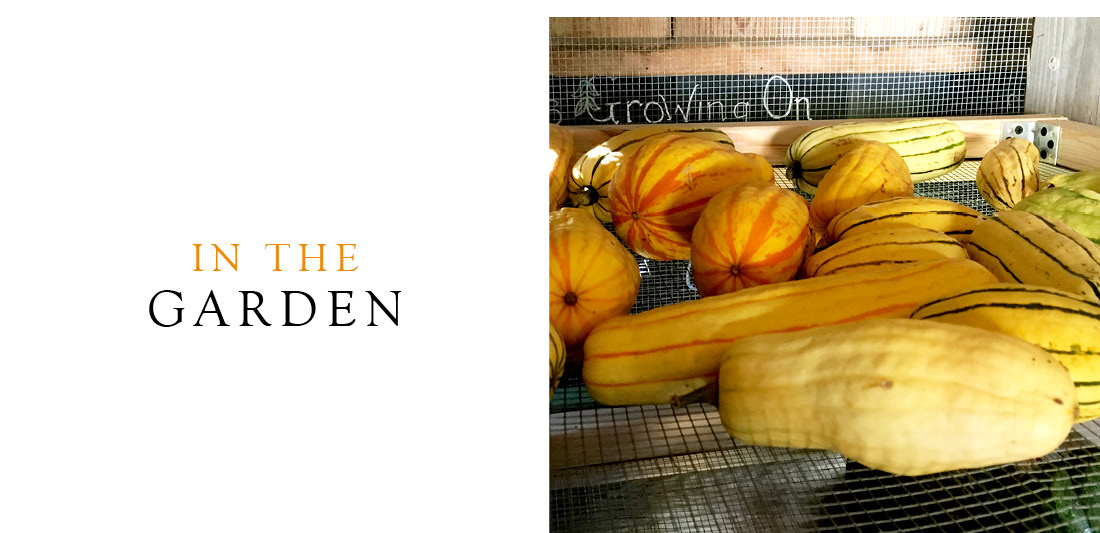
As we start shifting gears to focus on “cool” weather crops like beets, carrots, broccoli and greens, our squash, in particular, has been unstoppable! The winter squash, including butternut, delicata, kabocha, and buttercup, are filling up the curing racks by the day.
The curing process allows the veggies to dry, which creates a hard shell or skin and prevents them from rotting in storage. You can still eat these vegetables as soon as you harvest them, but this way you can extend their shelf life and eat squash, onions and potatoes for months after you’ve finished harvesting! In fact, “winter squash” are just squash that are grown during the usual season (summer) but cured for storage to be eaten throughout the winter.
Bulb vegetables like garlic, onions and shallots also need to “cure” for a while before they can be stored for long periods of time or shipped and sold. Our very own Jordan Novander built our beautiful rack (check out Jordan and his work in photos below) so that we can store and cure more vegetables, but this process is something you can easily do at home to extend the life of your produce!

Bulb vegetables, squash and potatoes are perfect candidates for curing – just a few things to keep in mind:
- Ensure the skin is dry before putting them away!
- Don’t wash your onions/garlic/potatoes before curing; if necessary, you can gently brush the dirt off
- Don’t store any damaged vegetables, use them fresh instead!
- A rack of any kind (even a wooden bench) will work, as long as it is in a well-ventilated location away from direct sunlight. You can build your own or check out https://www.gardeners.com/buy/harvest-storage-rack/38-221.html.
- Wooden crates or baskets are also good tools for storage, especially once the vegetables are cured. We get our baskets and crates from http://www.texasbasket.com/
- Make sure your vegetables get good air circulation through the entire curing/drying process; too much moisture and they might rot instead of cure!
And a few veggie specific tips:
- Winter Squash and Pumpkins – the skin needs to be hard! Leave them in a well-ventilated area (or on a rack in our case), until the skin is completely hard. You can even leave them outside in the garden if the weather is dry.
- Onions, garlic, and shallots – hang small bunches in a dark, well-ventilated place for a few weeks until the tops (greens) are completely dry. At that point, you can either cut the tops off or keep them on for storage. You can also do this with your herbs!
- Potatoes – put them in a paper bag in a dark space for about 2 weeks before putting them away for storage.
If cured correctly, and kept in a cool, dry environment, your veggies can last in storage for months! The key is using them as you need them, and using or tossing out anything that seems like it is changing while in storage (changing color, getting softer, getting moldy, etc.).
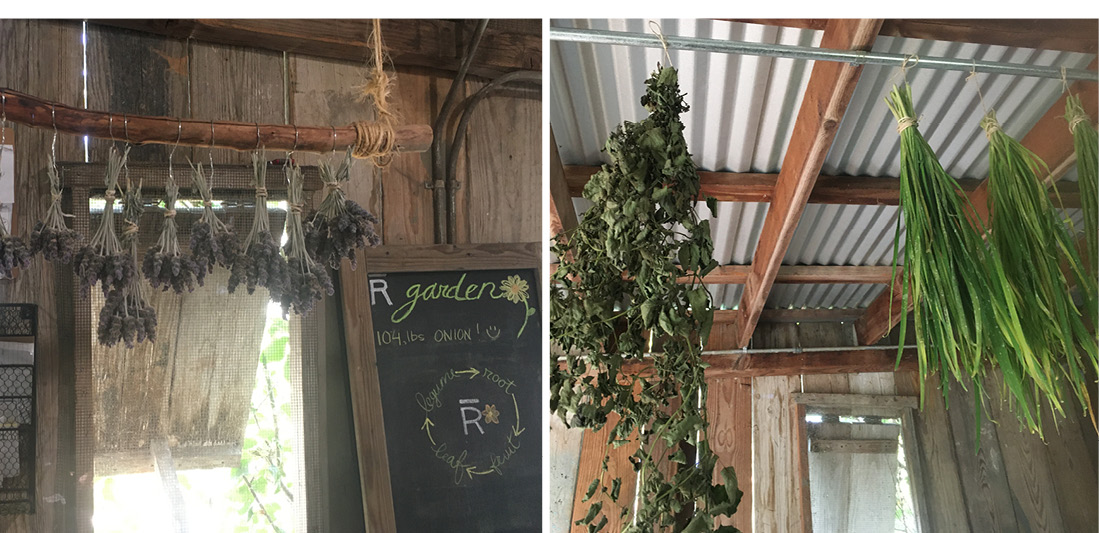
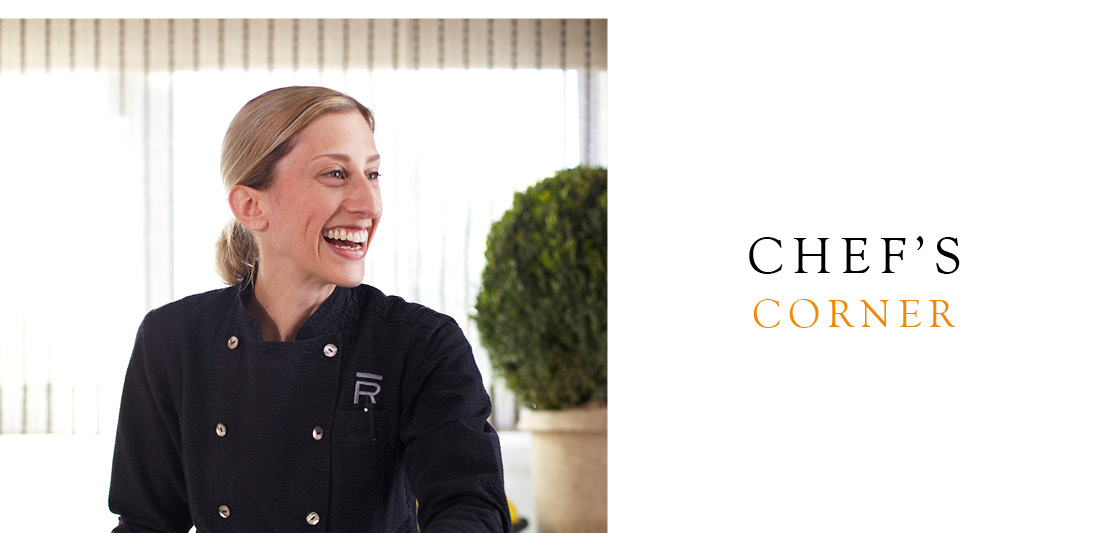
With an abundance of zucchini and now our winter squash varieties coming in, Chef Meredith and her team are getting quite creative in preparing this nutrient-rich powerhouse.
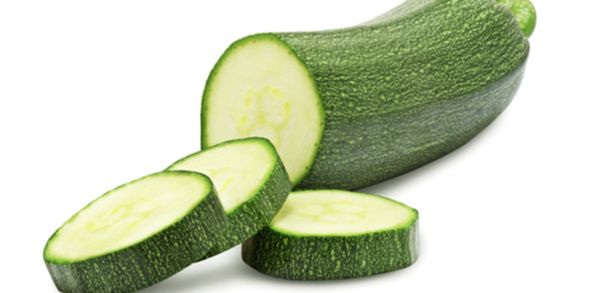
Zucchini Soup
1 Tbsp olive oil
1 onion, diced
2-3 cloves garlic, chopped
2 pounds zucchini, chopped
3 cups vegetable stock
2-4 Tbsp nutritional yeast
Juice of half a lemon
Salt and Pepper to taste
Instructions
Add the olive oil, chopped onions and garlic to a pot and sauté until the onions are softened.
Then, add in the zucchini and toss with the onions.
Next, add the vegetable stock. Bring to a boil, reduce heat, cover the pot and simmer until the zucchinis are soft and cooked.
Blend up with an immersion blender if you have one or by transferring in stages to a blender and blending until smooth.
Squeeze in lemon juice, add in nutritional yeast and season to taste with salt and pepper.
**For the soup to be super creamy, strain all of the vegetables from the stock after they are cooked. While blending, add in just enough of the liquid to blend. This will help the soup become thicker and less watery.

Thai Red Curry With Kabocha Squash
Makes 4 – 6 servings
2 cups cooked red, brown or black rice for serving
1 large kabocha squash (about 2 – 3 pounds), halved and de-seeded
2 Tbsp grapeseed oil
1 cup broccoli florets
2 baby bok choy, washed and quartered
1 Tbsp coconut oil
1 red bell pepper, diced
1/2 onion, diced
2 garlic cloves, minced
1- inch piece fresh ginger, peeled and minced
3 Tbsp vegan Thai red curry paste
1 tsp cumin
1/2 tsp coriander
One 15 oz can organic light coconut milk
1/4 cup water
2 tsp coconut sugar or maple syrup
1/4 cup fresh basil, chopped (for garnish)
1/4 cup fresh cilantro, chopped (for garnish)
Instructions
Preheat oven to 400°F
Rub each half of the squash with the grapeseed oil and place cut-side down on a Silpat or parchment-lined baking sheet. Roast halves for about 30 minutes until tender. Let cool completely. When cool, peel off the skin with a knife, cut into chunks and set aside. While the squash is roasting, cook the rice as needed.
Bring a large pot of salted water to a boil. Get an ice bath ready. Once the water is boiling, add the broccoli to the pot and cook for about 3 – 4 minutes until bright green. Using a slotted spoon, remove the florets and place them in the ice bath to stop the cooking. Repeat this process with the bok choy. Drain the vegetables and set aside.
In a large pot, heat the coconut oil over medium-high heat. Add the bell pepper and onion and sauté for 5 – 7 minutes until soft. Add in the garlic and ginger and sauté for another 2 – 3 minutes. Add the curry paste, cumin and coriander and stir well so that all of the paste gets incorporated. Then, pour in the coconut milk, whisking until all of the milk has been added and there are no lumps in the sauce.
Add the water and coconut sugar or syrup and bring to a simmer. Add the roasted squash, broccoli and bok choy to the sauce and simmer for 10 minutes until everything is warmed through.
Serve with rice and top with the basil and cilantro.

Pumpkin Cheesecake
Makes 16 – 20 mini cheesecakes
Crust:
1/2 cup pitted dates
1 cup raw almonds or pecans
1 tbsp cacao powder
1 tsp vanilla extract
Cheesecake layer:
1 1/2 cups raw cashews, soaked at least 3 hours
2 tbsp maple syrup
1 tsp lemon juice
1/4 cup coconut oil, melted
1/3 cup organic canned pumpkin
1 tsp pumpkin spice mix
1/2 tsp cinnamon
Pinch of salt
Instructions
Place the crust ingredients in the blender or food processor and pulse until a sticky dough forms.
Press about 1-1 1/2 tablespoons of the crust into the bottoms of a silicone mini muffin pan and place in the refrigerator while you prepare the cheesecake topping.
Place the cheesecake ingredients in the blender and puree on high until smooth and creamy.
Spoon the cheesecake mixture over the crusts in the pan and spread it evenly. Tap the pan a few times on the counter to remove any air bubbles.
Freeze the dessert for at least 2 hours. Once frozen pop out of the molds and serve.


Animalkind
By Ingrid Newkirk & Gene Stone
The Art of Stillness
By Pico Iyer
FOOD FOOD FOOD
By The Ranch Malibu
How to Eat
By Thich Nhat Hanh
How Emotions Are Made
By Lisa Feldman Barrett
Live Beautiful
By Athena Calderone
Together
By Vivek Murthy, MD
Untamed
By Glennon Doyle













